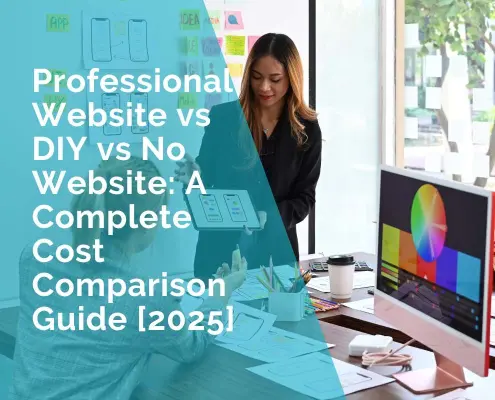How to Build a Strong Brand Reputation for Your Business
Building a strong brand reputation is essential for long-term success, as it directly impacts customer trust and loyalty. By consistently delivering on promises, engaging authentically, and maintaining transparency, businesses can create positive associations that resonate with their audience. Understanding customer needs, delivering quality, and encouraging satisfied customers to share feedback are key to fostering loyalty and attracting new clients in a competitive market.
Understanding Brand Reputation
Building a strong brand reputation is crucial for business success, and it requires knowing what influences how your brand is perceived. It involves multiple factors including customer feedback and your company’s actions. Consistently delivering high-quality products or services, maintaining transparent communication, and addressing concerns promptly all contribute to a positive image. Additionally, a strong reputation can lead to increased customer loyalty, positive word-of-mouth, and a competitive edge in the market. It’s important to remember that brand reputation is built over time, and every interaction with customers can either strengthen or weaken that image.
The Concept of Brand Reputation
Brand reputation refers to how others see and feel about your brand. It is built over time through the experiences people have with your products or services. A positive reputation strengthens trust and makes customers more likely to choose you over competitors. On the other hand, a negative reputation can damage customer relations and hinder growth. Reputation affects customer loyalty and directly impacts business performance, making it an essential area to focus on for any brand looking to establish itself in the market.
Factors Influencing Brand Reputation
Various factors contribute to shaping your brand’s reputation. Customer service is a critical component; timely and helpful responses foster goodwill and positive word-of-mouth. Product quality is equally important, as consistent excellence allows customers to trust your brand’s promises. Transparency in business operations builds credibility, encouraging trust. Keeping an eye on online reviews and social media mentions is vital, as these platforms provide immediate feedback on how your brand is perceived publicly. Addressing issues promptly can prevent reputational damage.
Strategies for Building Brand Reputation
Strengthening your brand reputation involves harmonizing what you say and do across all platforms, being open and honest, delivering top-notch products or services, connecting with your audience, and encouraging your employees to be ambassadors.
Consistency Across All Platforms
To ensure your brand is recognizable and trusted, maintain uniformity in messaging, visuals, and tone. Use consistent colors, logos, and taglines to create a cohesive image. Create guidelines for social media, advertisements, and customer service to ensure everyone communicates the same message. Incorporating targeted outreach strategies, such as efficient direct mail by zip code, can further strengthen your brand’s impact. This consistency helps build trust and makes it easier for customers to identify and relate to your brand.
Authenticity and Transparency
Be honest and genuine in all your business dealings. Share your brand story and core values in a way that resonates with your audience. Address any issues openly and communicate with your customers sincerely. Transparency builds trust and shows that you value your customers’ opinions and feedback.
Quality and Excellence
Delivering high-quality products or services is essential for a strong brand reputation. For manufacturers, leveraging advanced tools like extrusion equipment and the reliable precision of a manual lathe ensures consistent quality and craftsmanship that meet customer expectations. Implement detailed quality control measures and keep improving based on customer feedback. Superior quality encourages repeat business and word-of-mouth referrals, which are crucial for reputation building.
Customer Engagement
Engage with your audience by replying to their comments, questions, and feedback on social media and other platforms. Build a community around your brand where customers feel valued. Run interactive campaigns or host events to foster engagement. Meaningful interaction creates loyal customers who support and promote your brand.
Employee Advocacy
Your employees are powerful brand advocates. Encourage them to share positive experiences and insights about your company. Provide necessary training and tools, such as AutoCAD, for design professionals to empower them to represent your brand effectively. A supportive and enthusiastic workforce reflects positively on your brand, fostering trust and goodwill externally.
Managing Crisis and Negative Feedback
Addressing crises and managing negative feedback are vital for maintaining trust and credibility in your brand. By implementing proactive monitoring, quick crisis responses, and a structured recovery plan, you can ensure your business turns challenges into opportunities.
Proactive Reputation Monitoring
Keeping an eye on your brand’s online presence isn’t just a smart move—it’s essential. Use tools like Google Alerts, Social Mention, or dedicated reputation management software to stay informed about mentions of your brand.
Set up real-time alerts to ensure you catch potential issues as they arise. This way, you can get ahead of negative press or harmful reviews before they escalate. Engage with your audience regularly. Respond to comments and reviews, both good and bad, to build a connection with your customers.
Regularly analyze data from these tools to find patterns or recurring issues. Use this information to make informed decisions that improve customer satisfaction and reduce future complaints.
Effective Crisis Response
When a crisis hits, time is of the essence. Have a crisis management plan in place well before any issues arise. Identify key team members who are responsible for handling different aspects of a crisis. Ensure everyone knows their roles and responsibilities.
Communicate transparently with your audience. Acknowledge the issue promptly and take responsibility when it’s appropriate. Your customers will appreciate honesty and openness. Provide frequent updates across all your communication channels to keep stakeholders informed.
Once the situation is under control, evaluate the crisis response process. Gather feedback from your team and analyze what worked well and what didn’t. Adjust your crisis management plan accordingly to improve future responses.
Recovery and Brand Rehabilitation
After handling the immediate crisis, focus on rebuilding trust and strengthening your brand. Start by understanding the root cause of the problem and addressing it internally to prevent recurrence.
Launch an outreach campaign to engage with your audience. Share what steps you’ve taken to resolve the issue and highlight any positive changes within your organization.
Reinforce your brand’s values and commitment to quality through consistent messaging. Encourage satisfied customers to share their positive experiences.
Lastly, consider offering promotions or incentives to win back affected customers. Showing them that their loyalty matters can help repair any damage done to your brand’s reputation.
Measuring and Analyzing Brand Reputation
To maintain a strong brand, it’s crucial to track how your customers perceive you. By examining key performance indicators, employing social listening tools, and gathering direct customer feedback, you can gain a comprehensive view of your brand’s reputation.
Key Performance Indicators (KPIs)
KPIs are the metrics that help you understand your brand’s strength in the market. These could include customer satisfaction scores, net promoter scores, and brand awareness levels. Each KPI paints a part of the overall picture.
Tracking these metrics over time helps identify trends and spot any red flags early. Use visual tools like charts and graphs to easily interpret data patterns. Understanding these indicators will enable you to make data-driven decisions to improve your brand’s standing.
Social Listening Tools
Social listening tools allow you to monitor what’s being said about your brand on social media and other platforms. Tools like Hootsuite and Brandwatch gather mentions, hashtags, and discussions about your business.
These platforms help track sentiment—are people talking positively or negatively? Social listening provides real-time insights, which are crucial for addressing potential issues quickly. Analyzing this data allows you to engage with your audience effectively and tailor your communication strategy.
Surveys and Customer Feedback
Direct feedback from customers is invaluable. Conduct surveys using platforms like SurveyMonkey or Google Forms to gather insights on customer experiences. Ask specific questions that reveal what people love about your brand and what could be improved. This information helps identify strengths that you can highlight in your marketing and areas that require attention or adjustment. Additionally, regularly gathering feedback ensures that you stay attuned to customer needs and expectations, allowing you to adapt quickly to changes in preferences or industry trends. Listening to your customers not only fosters trust but also demonstrates a commitment to continuous improvement.
Encourage open-ended responses to gain deeper insights. Regularly reviewing this feedback helps identify patterns in customer preferences and behavior. By addressing concerns and implementing suggestions, you can build stronger relationships and enhance your brand reputation. This approach fosters a sense of trust and shows that you value customer opinions, which can lead to greater customer satisfaction and loyalty. Moreover, actively using feedback to make improvements demonstrates that your brand is responsive and dedicated to providing a better experience, ultimately setting you apart from competitors.
Conclusion
Building and maintaining a strong brand reputation requires a consistent focus on customer satisfaction, transparency, and quality. By engaging authentically with your audience, empowering employees, and addressing feedback proactively, businesses can foster trust and loyalty. Implementing effective tools for monitoring and responding to customer sentiment ensures long-term success in a competitive market. Additionally, investing in training and development for employees helps create a positive internal culture, which translates into better customer service and stronger brand advocacy. Staying consistent in your messaging and values across all platforms also reinforces a cohesive and reliable brand image that customers can trust. Ultimately, a strong brand reputation acts as a foundation for sustainable growth and a loyal customer base.
***************
Jana Novak












